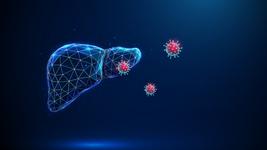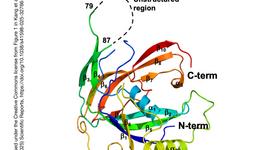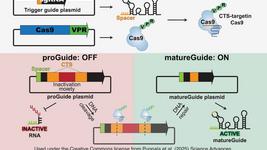CMN Weekly (14 February 2025) - Your Weekly CRISPR Medicine News
By: Karen O'Hanlon Cohrt - Feb. 14, 2025
Top picks
- In an article published in Nature Nanotechnology, researchers in China, Sweden and the UK report the development of a cell-tropism programmable CRISPR–Cas9 ribonucleoprotein delivery system (RIDE) based on virus-like particles. They report that RIDE could be readily reprogrammed to target dendritic cells, T cells and neurons, and significantly reduced disease symptoms in ocular neovascular and Huntington’s disease models via cell-specific gene editing with comparable efficiency to that of adeno-associated virus and lentiviral vectors and higher efficiency than that of lipid nanoparticles. They also showed that RIDE could efficiently edit the huntingtin gene in patients’ iPSC-derived neurons and was tolerated in non-human primates. This study is expected to pave the way for in vivo CRISPR therapeutics.
Research
- In an article published this week in Cell Genomics, a team of researchers at Duke University present a potentially new treatment approach for a group of rare and complex genetic diseases caused by defects in a relatively large region of the genome. By identifying and activating a master epigenetic switch using CRISPR, the researchers showed they can turn on many naturally suppressed genes from one parent to compensate for defects in the same genes provided by the second parent. In their study, they targeted Prader-Willi syndrome, which causes a plethora of physical, mental and behavioural problems, most notably a persistent and intense feeling of hunger. While the proof-of-concept study was limited to treating stem cells and neurons in an in vitro setting, the researchers hope it can eventually have clinical impact. Read a summary of the study and its findings here.
- A team in Sweden, United States and Denmark developed a pipeline to characterise orthologues of a panel of established human obesity genes in live zebrafish larvae. Their setup involved CRISPR/Cas9-mediated gene disruption of the zebrafish orthologues followed by non-invasive, semi-automated fluorescence imaging and deep learning-based image analysis. The team found that while 5 days of overfeeding increased lipid accumulation in adipocytes by 10 days post-fertilisation, CRISPR/Cas9 mutations in 12 to 16 of the established obesity genes showed no effect on adipocyte lipid accumulation at this timepoint (n=1014), and effects on food intake at 8 post-fertilisation (n=1127) were inconsistent with mammalian studies. However, they did observe other effects of CRISPR-induced mutations, including ectopic accumulation of lipids in the vasculature and liver, body size changes, alterations in LDLc/total cholesterol, and effects on pancreatic beta cells and glucose. The findings, published yesterday in Scientific Reports, demonstrate that the zebrafish model can reveal direct effects of obesity-related genes on cardiometabolic traits before their effects on adiposity become apparent.
- Scientists in Austria present an in vivo protocol for CRISPR screens in the mouse brain, using adeno-associated virus with transposon-based delivery of the CRISPR guide RNAs. The protocol was published this week in Nature Protocols.
- In an article published today in Journal of Medical Virology, scientists in India report at reverse transcription recombinase polymerase (RT-RPA)-assisted CRISPR/Cas12a-based one-pot rapid detection assay for the four distinct dengue virus (DENV) serotypes that cause Dengue. The fluorescence detection platform was developed to target non-structural 1 (NS1) gene for DENV-1, 2, and 3, and envelope (E) gene for DENV-2. Further, crRNA specific to DENV serotypes were designed to facilitate CRISPR/Cas12a detection. Analytical sensitivity was determined using synthetic RNA and DENV serotypes genome. Clinical validation of the assay was performed using RNA extracted from samples of patients with acute encephalitis syndrome or acute febrile illness. The developed CRISPR/Cas12a-based detection platform can detect all four serotypes of DENV viz 1−4 in a single pot using fluorescence detection, with no cross-reactivity with other related aetiologies tested. When tested on 76 clinical samples (DENV PCR positive = 16, DENV PCR negative = 60), the assay demonstrated 93.7% sensitivity and 100% specificity with an overall accuracy of 98.7% for detection of the Pan-DENV serotypes.
- Scientists in China report the discovery of a novel higher-order RNA structure, RNA G-triplex (rG3), formed by the TERRA sequence. Through CD spectroscopy, NMR analysis, and molecular modelling, the team confirmed its stable, parallel conformation, and found that rG3 exhibits strong binding to thioflavin T (ThT), N-methyl mesoporphyrin IX (NMM), and hemin, thus indicating its potential as a biosensing element. They also found that CRISPR-Cas13a trans-cleaves rG3, demonstrating its utility as a sensitive reporter in diagnostic applications. The team suggest that their findings, published in Chemical Communications, expand the structural diversity of RNA and suggest new avenues for RNA-based biosensors and CRISPR diagnostics.
- A team in Thailand developed volumetric imaging assays to visualise recombinase polymerase amplification (RPA) condensates and the reaction progression in whole volumes so that they could dissect how macroscopic properties such as size distribution and droplet count could contribute to the overall reaction efficiency of RPA-based detection assays. They found that spatial organisation of proteins in condensates may create optimal conditions for amplification, and disruption of such structures may diminish the amplification efficiency in reverse transcription-RPA. The insight that RPA functions as a multiphase condensate led the team to identify the UvsXD274A mutant, which has a distinct phase-separation propensity compared to the wild-type enzyme and can enhance RNA detection via RPA-coupled CRISPR-based diagnostics. Their findings were published this week in Journal of the American Chemical Society.
Industry
- Ensoma announced yesterday that the FDA has granted both rare pediatric disease and orphan drug designations to the company’s lead programme, EN-374, for the treatment of X-linked chronic granulomatous disease (X-CGD). According to a press release, Ensoma anticipates that it will submit an IND application for EN-374 in the first half of 2025. The candidate is designed to treat X-CGD through the in vivo delivery of a functional CYBB gene directly to haematopoietic stem cells. It uses a promoter for selective expression in neutrophils, the primary cell type affected by X-CGD. Successful expression will restore patients’ ability to fight infection.
- Vor Bio presented novel research yesterday evaluating the patient experience and barriers to enrolment and participation in cell and gene therapy (CGT) trials. The data, which was presented at the TANDEM Meetings of ASTCT and CIBMTR, demonstrated the need to improve the process and experience of patients considering and enrolling in CGT trials. Among the key findings were that: educating and enroling patients in CGT trials requires more time compared to non-CGT trials due to their complexity and patients’ need for additional reassurance or emotional support, despite the extra time required to educate patients, this did not prevent any survey participants from offering these trials to patients, underscoring the transformative potential of these treatments, and study respondents reported that patients share many concerns about CGT trials, including the fear of unknown risks of gene editing and caregiver requirements. See the official press release and poster presentation to learn more.
- CRISPR Therapeutics provided a business update and fourth quarter and full year 2024 financial results earlier this week. So far, more than 50 authorised treatment centres have been activated globally for CASGEVY, and more than 50 patients have had cells collected across all regions as of the end of 2024. Clinical trials are ongoing for multiple next-generation CAR T product candidates and in vivo gene-editing product candidates with updates expected in 2025. See the official press release for further details.
- Vertex Pharmaceuticals reported fourth quarter and full year 2024 financial results earlier this week. Among the gene-editing-relevant updates were that Vertex has completed enrolment of children 5 to 11 years of age with sickle cell disease or transfusion-dependant beta thalassemia in two global Phase 3 studies of CASGEVY and expects to complete dosing of this age group in 2025. The company also continues to advance pre-clinical assets for gentler conditioning for CASGEVY, which could broaden the eligible patient population. See the official press release for full details.
- Modalis Therapeutics reported operational highlight and fiscal year end 2024 financial results yesterday. The company is advancing its epigenetic-editing candidate, MDL-101, towards IND filing following the awarding of Rare Pediatric Disease and Orphan Disease Designations by the FDA in 2024. MDL-101 is being developed for the treatment of LAMA2-Congenital Muscular Dystrophy (LAMA2-CMD). The candidate comprises a guide nucleotide targeting the LAMA1 gene, a highly homologous sister gene of the disease-causing gene LAMA2, catalytically-dead Cas9 (dCas9) fused with trans-activating domain driven by a muscle-specific promoter and coded in a muscle-specific AAV vector. MDL-101 is designed to upregulate LAMA1 expression in patients’ muscle tissue to compensate for loss-of-function caused by LAMA2 mutation, and therefore has the potential to provide a one-time, durable treatment to benefit people living with LAMA2-CMD. See the official press release for further details.
Clinical
- Allogene Therapeutics announced yesterday the publication of data from its Phase 1 ALPHA and ALPHA2 clinical trials of cemacabtagene ansegedleucel (cema-cel; formerly known as ALLO-501/A) in relapsed/refractory large B-cell lymphoma (LBCL). The data, published as a Rapid Communication in the Journal of Clinical Oncology, represent the largest dataset of LBCL patients treated with an allogeneic CAR T product and, with a minimum of two years of follow-up, the longest follow-up to date. The main findings were that the efficacy of cema-cel was comparable to approved autologous CD19 CAR T-cell therapies, the response was durable with a manageable safety profile that was consistent with approved CD19 CAR T-cell therapies. See the official press release for further details.
Reviews
- Vectors in CRISPR Gene Editing for Neurological Disorders: Challenges and Opportunities. This article reviews CRISPR delivery vectors for neurological disorder treatment and explores potential solutions to overcome limitations in vector systems. Additionally, the delivery strategies of CRISPR systems are highlighted as valuable tools for studying neurological diseases, and the challenges and opportunities that these vectors present.
News from CRISPR Medicine News
- On Wednesday, we shared news from Arbor Biotechnologies. The FDA has granted orphan drug and rare pediatric disease designations to ABO-101, Arbor's gene-editing therapeutic candidate for primary hyperoxaluria type 1. The one-time treatment aims to reduce oxalate production in patients with this rare genetic kidney disease. Read our article here.
- In case you missed our latest CMN Live interview, you can watch the recording here. In this episode, we chatted with Associate Professor Alessia Cavazza about advances in prenatal (in utero) gene editing for the treatment of early onset, rare inherited diseases.
To get more CRISPR Medicine News delivered to your inbox, sign up to the free weekly CMN Newsletter here.
Tags
ArticleMissing linksNewsCMN WeeklyAllogene Therapeutics, Inc.Arbor BiotechnologiesCRISPR Therapeutics AGEnsomaModalis TherapeuticsVertex Pharmaceuticals, Inc.Vor Biopharma
CLINICAL TRIALS
IND Enabling
Phase I
Phase II
Phase III
Gastric Cancer and Colorectal Cancer, CRC, (NCT07166263)
Sponsors:
Base Therapeutics (Shanghai) Co., Ltd.
Sponsors:
Base Therapeutics (Shanghai) Co., Ltd.
IND Enabling
Phase I
Phase II
Phase III
Relapsed or Refractory Acute Myeloid Leukemia, AML, (NCT06541444)
Sponsors:
Base Therapeutics (Shanghai) Co., Ltd.
Sponsors:
Base Therapeutics (Shanghai) Co., Ltd.
IND Enabling
Phase I
Phase II
Phase III







